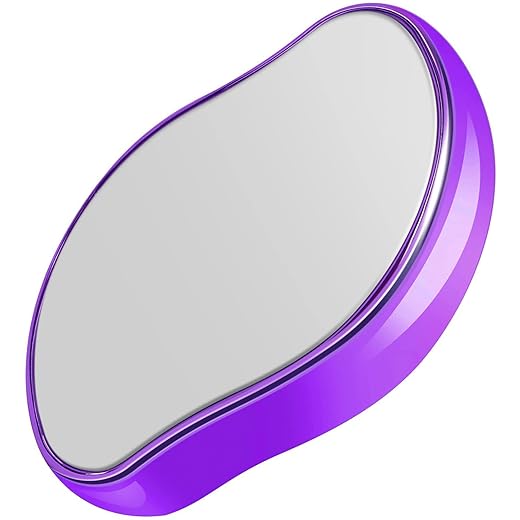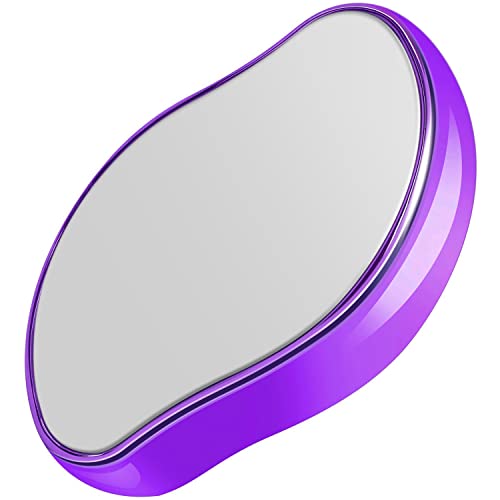The purpose of this step-by-step guide is to help individuals determine whether a product is genuinely environmentally friendly. As consumers become more conscious about the impact of their purchases on the environment, it is essential to have a reliable method for evaluating the eco-friendliness of products. This guide provides a clear and straightforward approach to assess the environmental credentials of a product, enabling consumers to make more informed and sustainable choices.
Top Environmentally-Conscious Products






Understand the Terminology
To understand the terminology related to eco-friendly products, follow these steps:
- Familiarize yourself with the term “eco-friendly.” This term refers to products or practices that are not harmful to the environment. They are designed to minimize their impact on nature and promote sustainability.
- Understand the concept of “sustainability.” Sustainable products are those that are produced and used in a way that meets the needs of the present generation without compromising the ability of future generations to meet their own needs. Look for products that are made from renewable resources, have a low carbon footprint, or are recyclable.
- Learn about the term “green.” In the context of products, “green” refers to those that have been manufactured using environmentally friendly processes. These products often prioritize energy efficiency, waste reduction, and the use of non-toxic materials.
- Get familiar with the term “organic.” Organic products are made using natural ingredients that have been grown without the use of synthetic chemicals, pesticides, or genetically modified organisms (GMOs). Look for organic certifications such as USDA Organic or EU Organic to ensure the product meets specific organic standards.
By understanding these terms, you will be better equipped to make informed choices when purchasing products that align with your values and contribute to a more sustainable future.



Check for Certifications
Look for recognized certifications and labels, such as the Energy Star logo or the Forest Stewardship Council (FSC) certification. These certifications indicate that the product has undergone specific environmental assessments. Check product packaging or labels for these certifications to ensure that you are making an environmentally conscious choice.
Research the Brand
To investigate the brand’s commitment to sustainability, start by visiting their website. Look for a section that provides information about their environmental policies, initiatives, and efforts to reduce their carbon footprint. Pay attention to any certifications or partnerships they have with environmental organizations. Take note of specific actions they have taken to promote sustainability, such as using renewable energy or implementing recycling programs.



Examine the Packaging
To evaluate the packaging materials used, follow these steps:
- Look for minimal packaging: Check if the product is over-packaged, as excessive packaging can contribute to waste. Opt for products that are not excessively wrapped or boxed.
- Check for recyclable or biodegradable materials: Look for packaging materials that can be recycled or are biodegradable. This includes materials like cardboard, paper, glass, or certain types of plastic that are labeled as recyclable or compostable.
- Seek labels indicating recycled content: Labels that indicate the packaging is made from recycled content are a positive sign. Look for labels like “made from X% recycled materials” or symbols like the recycling arrow with a number inside, indicating the type of plastic used.
By evaluating the packaging materials based on these criteria, you can make more informed choices that align with sustainable practices.
Consider the Life Cycle
Assessing the product’s entire life cycle is crucial to understanding its environmental impact. Start by evaluating the raw material sourcing process, ensuring that materials are obtained sustainably and ethically. Next, consider the energy consumption during manufacturing, aiming for energy-efficient production methods. Finally, explore the potential for recycling or proper disposal at the end of the product’s use, encouraging users to recycle or dispose of the item responsibly.
For example:
- Evaluate raw material sourcing: Ensure that the product’s raw materials are sourced sustainably and ethically. Look for certifications such as Forest Stewardship Council (FSC) for wood or Responsible Down Standard (RDS) for down feathers. This step ensures that the product does not contribute to deforestation, habitat destruction, or exploitation of workers.
- Consider energy consumption during manufacturing: Look for products that are manufactured using energy-efficient processes. For instance, choose electronics with Energy Star ratings, indicating that they meet strict energy efficiency guidelines. This reduces the carbon footprint associated with the manufacturing process and helps conserve energy resources.
- Assess potential for recycling or proper disposal: Before purchasing a product, consider its potential for recycling or proper disposal at the end of its lifespan. Look for items made from recyclable materials such as glass or aluminum, which can be easily recycled. Additionally, check if the product’s components are easily separable, facilitating recycling or responsible disposal.
By following these steps, you can make informed choices about the products you purchase and contribute to a more sustainable and environmentally-friendly lifestyle.


Evaluate Energy Efficiency
To evaluate the energy efficiency of electronic products, first, check for energy-efficient features and Energy Star ratings. Look for products that consume less energy during use and have power-saving modes. This can be done by reading the product specifications or looking for the Energy Star label. By selecting energy-efficient electronic products, you can reduce your energy consumption and contribute to a more sustainable future.
Assess Chemicals and Materials
To assess chemicals and materials, begin by researching the materials used in the product and identify any potentially harmful chemicals. Look for products that are free from toxic substances such as lead, mercury, phthalates, and formaldehyde. Ensure that you thoroughly examine the product’s specifications and labels to make an informed decision about its safety.
Consider Product Durability
Evaluate the product’s durability and expected lifespan by following these steps:
- Examine the materials used in the product’s construction. Look for high-quality materials that are known for their durability, such as stainless steel or reinforced plastics.
- Check for any certifications or quality standards that the product may have. These can be an indication of the manufacturer’s commitment to producing long-lasting and reliable products.
- Read customer reviews and ratings to get an idea of how the product has performed over time. Look for feedback on its durability and whether customers have experienced any issues or premature failures.
- Consider the warranty offered by the manufacturer. A longer warranty period often indicates that the company has confidence in the product’s durability.
- Compare the expected lifespan of the product with similar alternatives on the market. Look for objective measurements or data that can give you a clear understanding of how long the product is likely to last.
By evaluating the durability and expected lifespan of a product, you can make a more informed purchasing decision and choose products that are built to last. This not only saves you money in the long run but also helps reduce waste and minimize the environmental impact of manufacturing.
Read Reviews and Expert Opinions
Check online reviews and expert opinions to gather insights from other consumers and professionals who have assessed the product’s environmental claims. Look for reputable sources such as consumer review websites, environmental organizations, and industry experts. Analyze the overall feedback and consider both positive and negative comments to form a well-rounded understanding of the product’s environmental impact.
Considerations for Sustainable Choices
In conclusion, determining whether a product is truly environmentally friendly requires careful consideration of multiple factors. We have explored key indicators such as certifications, materials used, manufacturing processes, and packaging. It is crucial to look beyond the eco-friendly claims and conduct thorough research to ensure the product’s sustainability credentials are genuinely credible. By taking a holistic approach and considering various aspects, we can make informed choices that contribute to a healthier planet. Let us be conscious consumers and prioritize products that align with our environmental values.
Evaluating Eco-Credentials
Using Eco-friendly, Sustainable Products: A Step-by-Step Guide
- Start by researching and educating yourself about eco-friendly and sustainable products. This will help you understand the importance and benefits of using them
- Begin by replacing single-use items with reusable alternatives. For example, switch from plastic water bottles to a reusable stainless steel or glass bottle
- Look for products that are made from natural, biodegradable, and renewable materials. For instance, choose clothing made from organic cotton or linen instead of synthetic fabrics
- Reduce your energy consumption by investing in energy-efficient appliances and light bulbs. This can significantly decrease your carbon footprint
- Support local and sustainable businesses by purchasing products that are locally produced and ethically sourced. This helps reduce transportation emissions and supports the local economy
Frequently Asked Questions about Eco-friendly, Sustainable Products
Are there any specific industries or sectors that offer a wide range of eco-friendly, sustainable products?
Yes, there are several industries or sectors that offer a wide range of eco-friendly, sustainable products. One notable sector is the renewable energy industry, which includes solar power, wind energy, hydropower, and geothermal energy. These industries focus on producing clean, renewable energy sources as alternatives to fossil fuels.
Another sector that offers eco-friendly products is the organic and sustainable agriculture industry. This industry emphasizes practices that minimize the use of synthetic chemicals, promote biodiversity, and conserve water resources. Organic food, clothing made from organic fibers, and natural beauty products are some examples of eco-friendly products in this sector.
The green building industry is also worth mentioning. It offers sustainable building materials, energy-efficient appliances, and innovative designs that reduce the environmental impact of construction. These products aim to improve energy efficiency, reduce waste, and promote healthier living environments.
Additionally, the transportation industry has been developing more eco-friendly alternatives. Electric vehicles (EVs) and hybrid cars are becoming increasingly popular, offering lower emissions and reduced dependence on fossil fuels. The growth of public transportation systems and the emphasis on cycling and walking infrastructure also contribute to a more sustainable transportation sector.
Finally, the fashion and textile industry is making strides towards sustainability. Many brands now offer clothing made from organic or recycled materials, reducing the environmental impact of the fashion industry. Some companies also focus on fair trade practices and ethical production methods.
These are just a few examples of industries or sectors that offer a wide range of eco-friendly, sustainable products. It is encouraging to see the growing emphasis on sustainability across various industries, as it brings us closer to a more environmentally conscious future.

